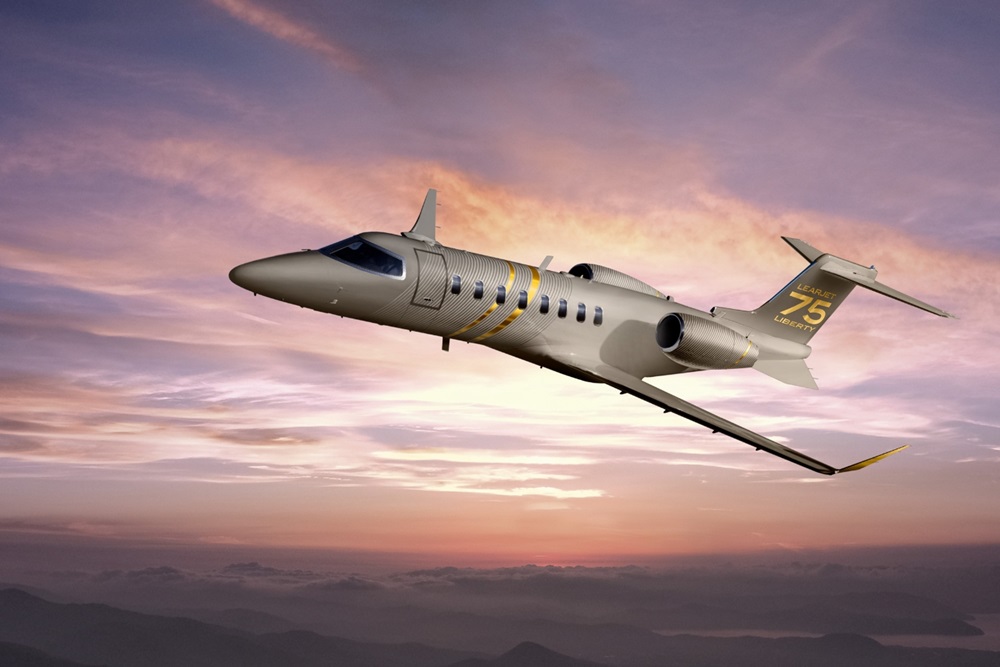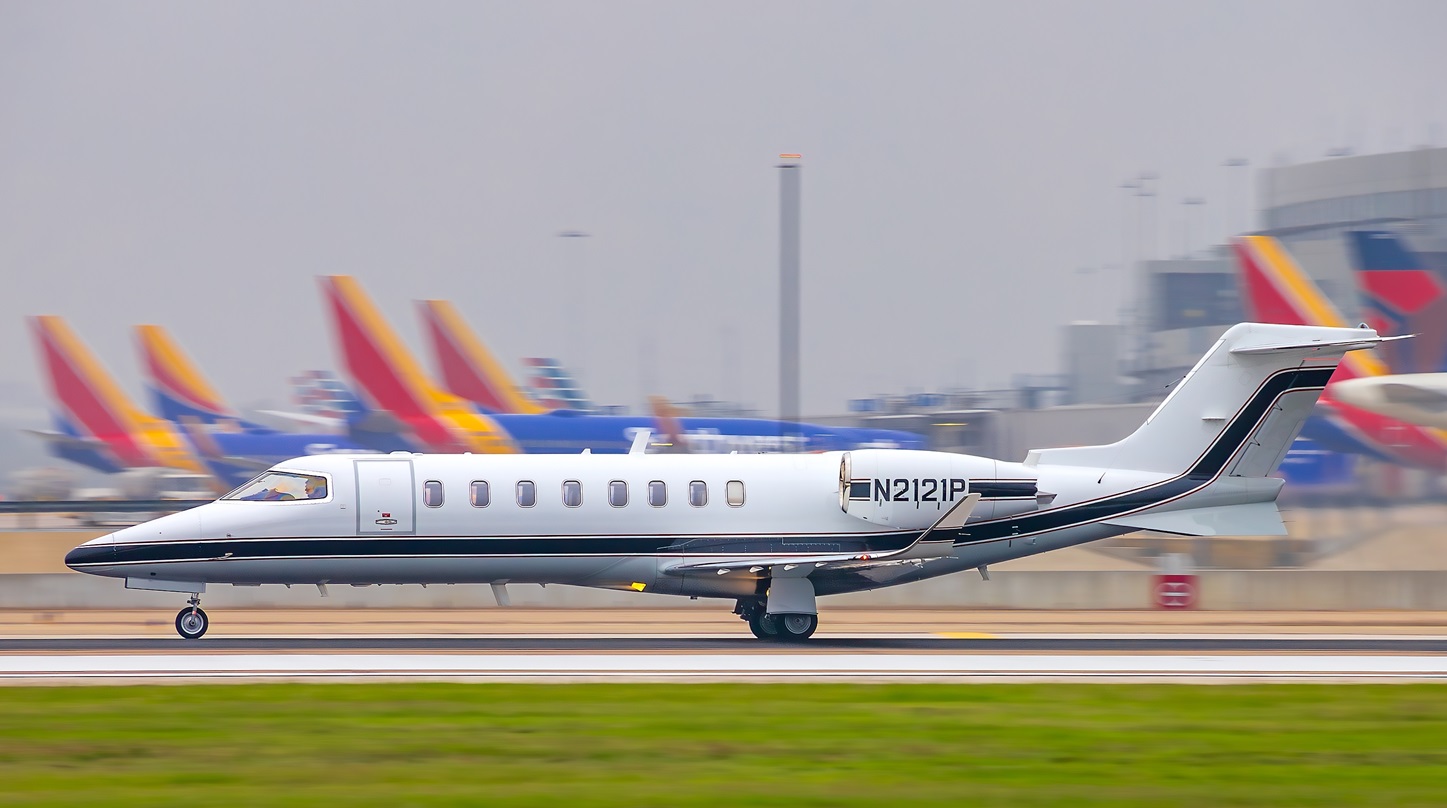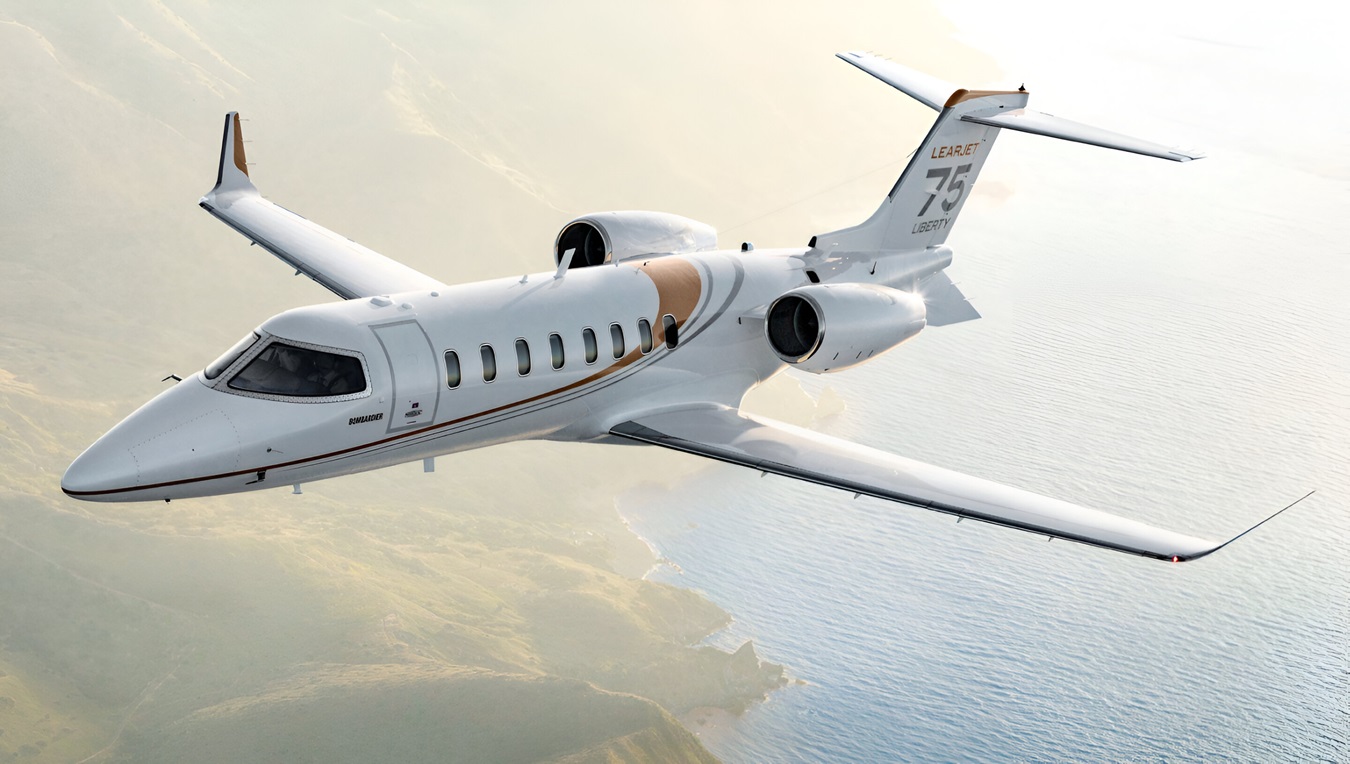As you bid farewell to an aviation icon, the Learjet 75 stands as a testament to the evolution of private jet travel. This mid-sized business jet, manufactured by Bombardier Aerospace’s Learjet division, marked the end of an era when production ceased in 2022. Over its decade-long run, the Learjet 75 competed with industry stalwarts, offering a unique blend of performance and luxury.
From its upgraded avionics to its spacious cabin, this aircraft represented the pinnacle of Learjet’s innovation. Join us as we explore the legacy of the Learjet 75, its impact on the aviation industry, and the factors that led to its final flight into history.
Introduction to the Learjet 75: A Legacy of Luxury and Performance
The Learjet 75, a mid-sized business jet manufactured by Bombardier Aerospace, represents the pinnacle of private aviation luxury and efficiency. As the final iteration of the iconic Learjet line, this aircraft combines decades of aeronautical innovation with modern amenities, setting a new standard for private charter experiences.
A Cut Above the Competition
In the competitive world of private jets, the Learjet 75 stands out against rivals like the Embraer Phenom 300 and the Cessna Citation CJ4. With its larger cabin and faster speed, it offers a superior travel experience for discerning clients who demand the best in comfort and performance.
Unparalleled Comfort and Technology
The Learjet 75’s flat-floor cabin comfortably seats up to eight passengers in a double club configuration, with an additional seat available in the rear lavatory if needed. Equipped with Wi-Fi, a state-of-the-art cabin management system, and an inflight entertainment system, it ensures passengers remain connected and entertained throughout their journey.
The End of an Era
While production of the Learjet 75 concluded in 2022, its legacy lives on in the world of private charter. For those seeking the ultimate in luxury air travel, Bombardier’s commitment to excellence continues with their focus on larger Challenger and Global series jets, ensuring the spirit of Learjet lives on in the skies.
Learjet 75: A Legacy of Innovation and Speed

The Learjet 75 stands as a testament to Bombardier’s commitment to innovation in the private aviation sector. This mid-sized business jet, introduced in 2013, quickly became a formidable competitor to the likes of the Embraer Phenom 300 and Cessna Citation CJ4. With its sleek design and cutting-edge technology, the Learjet 75 offered a perfect blend of performance and luxury for discerning travelers.
Unparalleled Performance
At the heart of the Learjet 75’s appeal was its impressive speed and range. The aircraft could cruise at speeds up to Mach 0.81, making it one of the fastest in its class. This speed, combined with a range of over 2,000 nautical miles, made the Learjet 75 an ideal choice for both short hops and transcontinental flights.
Luxurious Comfort
Inside, the Learjet 75 boasted a flat-floor cabin that could comfortably seat up to eight passengers. The aircraft’s interior was meticulously designed to provide a spacious and elegant environment, featuring premium materials and customizable configurations to suit the needs of even the most demanding clients.
Technological Advancements
The Learjet 75 incorporated state-of-the-art avionics, including the Garmin G5000 Vision suite. This advanced flight deck enhanced safety and efficiency, providing pilots with intuitive touchscreen controls and improved situational awareness. For passengers, the aircraft offered seamless connectivity and entertainment options, ensuring a productive and enjoyable journey.
Upgraded Features for the Final Learjet
The Learjet 75, the last in the iconic line of private jets, boasted significant improvements over its predecessors. This final iteration showcased Bombardier’s commitment to innovation and luxury in the competitive world of private aviation.
Advanced Avionics and Aerodynamics
The Learjet 75 featured the state-of-the-art Garmin G5000 Vision suite, a touch screen-controlled flight deck that revolutionized pilot interaction and situational awareness. Aerodynamic enhancements, including canted winglets inspired by the Global 7500/8000 design, reduced drag by 2% and improved range by 4%.
Enhanced Comfort and Efficiency
Inside the cabin, passengers enjoyed a flat floor design with seating for up to eight in a double club configuration. The Learjet 75 offered amenities rivaling those of larger jets like the Embraer Phenom 300 and Cessna Citation CJ4, including Wi-Fi, a comprehensive cabin management system, and an inflight entertainment system. For added convenience, a Honeywell RE-100 auxiliary power unit (APU) was installed.
Performance Improvements
The Learjet 75’s upgrades weren’t just cosmetic. New, higher fuel-efficiency engines and a 200-pound weight reduction in the nose section contributed to an impressive range increase, allowing this Bombardier marvel to compete effectively in the mid-sized business jet market. These enhancements ensured that the final Learjet would leave a lasting impression in the world of private charter aviation.
Deliveries Fall Short of Expectations
Market Challenges and Production Delays
When Bombardier introduced the Learjet 75, hopes were high for this sleek midsize business jet. However, the road to success proved bumpier than anticipated. Despite its impressive features and improvements over previous models, the Learjet 75 faced stiff competition from rivals like the Embraer Phenom 300 and Cessna Citation CJ4.
Production delays plagued the early stages of the Learjet 75’s lifecycle, leading to a cascade of canceled orders. These setbacks put Bombardier on the back foot, struggling to regain momentum in a highly competitive market. The company’s ambitious delivery targets began to slip, as potential buyers turned to alternative options or postponed their purchase decisions.
Shifting Market Dynamics
As the private aviation landscape evolved, customer preferences shifted towards larger, more versatile aircraft. This trend favored Bombardier’s Challenger and Global series, inadvertently overshadowing the Learjet 75. The changing market dynamics, coupled with production challenges, resulted in delivery numbers that consistently fell below company projections.
Despite these hurdles, the Learjet 75 managed to carve out a niche for itself in the private charter market. Its blend of speed, comfort, and efficiency made it a popular choice for discerning clients seeking luxury and performance in a midsize package.
The End of an Era: The Last Learjet 75 Rolls Off the Line

A Bittersweet Farewell
In January 2022, the final Learjet 75 emerged from Bombardier’s production line, marking the end of an iconic aircraft family. This momentous occasion signaled the conclusion of nearly six decades of Learjet manufacturing, a brand synonymous with luxury private aviation.
The Legacy of Innovation
The Learjet 75, a mid-sized business jet, represented the pinnacle of Learjet’s evolution. Competing with aircraft like the Embraer Phenom 300 and Cessna Citation CJ4, it boasted advanced features such as upgraded avionics, winglets, and improved fuel efficiency. These enhancements solidified its position in the private charter market, offering a blend of performance and comfort that discerning travelers sought.
Shifting Focus in the Aviation Landscape
Bombardier’s decision to cease Learjet production reflected changing market dynamics. As demand shifted towards larger, more luxurious aircraft, the company redirected its resources to the Challenger and Global series. While the Learjet 75’s departure marks the end of an era, it also underscores the constant evolution within the private aviation industry, where innovation and adaptation remain paramount.
Frequently Asked Questions About the Learjet 75 Private Jet Charter
What is the typical cost to charter a Learjet 75?
The hourly rental rate for a Learjet 75 typically ranges from $6,000 to $7,000. As a light jet, it offers a more cost-effective option for shorter regional flights compared to larger aircraft. However, various factors can impact the final price, including flight distance, travel dates, and additional services requested.
How many passengers can the Learjet 75 accommodate?
The Learjet 75 can comfortably seat 6-7 passengers. Its cabin layout provides a balance of comfort and efficiency, making it suitable for both business and leisure travelers. The aircraft competes with other popular models in its class, such as the Cessna Citation CJ4 and Embraer Phenom 300.
What are the key advantages of chartering a Learjet 75?
Chartering a Learjet 75 offers several benefits. It provides a comfortable cabin, good range, and accessibility to smaller airports. The aircraft’s performance allows for efficient regional travel, while its modern amenities ensure a luxurious experience. Bombardier’s reputation for quality and safety also adds to the appeal of this private jet option.
Conclusion
As you reflect on the legacy of the Learjet 75, it’s clear this iconic aircraft made a lasting impact on business aviation. Though production has ended, the Learjet 75’s advancements in efficiency, comfort, and performance set new standards for mid-sized jets.
While Bombardier shifts focus to larger models, the innovations pioneered in the Learjet 75 will continue influencing future aircraft designs. For discerning travelers who value luxury and performance, the Learjet 75 remains a testament to aviation excellence. Its final flight may have occurred, but the Learjet 75’s contributions to private aviation will be felt for years to come.

















































